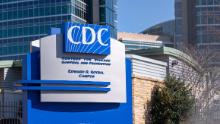In particular, Dr. Deborah Birx, coordinator for the President’s coronavirus task force, has become increasingly critical of the CDC, making clear in recent meetings that she is more than frustrated with the agency, according to two senior administration officials. Specifically, Birx believes the way the CDC gathers data on the coronavirus is antiquated, causing inaccurate and delayed numbers on both virus cases and deaths.
Birx has expressed her agitation during recent task force meetings, where at least one conversation between her and CDC Director Robert Redfield has grown heated, according to a source close to the task force. Birx and Redfield have known each other for decades, due to their work on HIV research together. And while Birx defended Redfield to their peers earlier this year over the CDC’s faulty test kits, her tone toward him has shifted dramatically in recent weeks, according to multiple officials and a source close to the task force.
Last week, Redfield was forced to apologize to administration officials after a draft of the CDC’s guidelines to reopening America were leaked to the media. The 68-page document outlined a detailed approach for how states, businesses and individuals could safely ease back into normalcy and were far more strict and detailed than the White House’s own road map toward a return to normal, a CNN review found.
On Thursday the CDC published just 6 pages of graphics labeled “decision trees” as updated guidance. After spending “innumerable hours” on the guidance draft of recommendations, which they say was asked for specifically by Dr. Birx, two senior CDC officials tell CNN that the White House decision to shelve it for now in favor of a 6-page outline has only added to mounting frustration toward Birx within the CDC.
Tension between Birx and the CDC was first reported by the Washington Post.
One senior administration official told CNN that the slimmed down guidelines should not been seen as a rebuke of Redfield or the CDC inside the White House, since a whole national strategy was never on the table.
“It makes no sense for a movie theatre in a rural Tennessee town with zero COVID cases to be under the same restrictions as a theatre in New York,” the official said.
Still, the limited guidelines combined with Birx’s dust up with Redfield have underscored to many top officials the level of sway Birx has inside the White House, particularly with Trump.
Even as the President has publicly rebuked Dr. Anthony Fauci, the nation’s top infectious disease expert, he remains totally supportive of Birx, officials tell CNN. “She is charming and listens to him. She has found a way to shut down his bad ideas without making him feel diminished, unlike Fauci and some of the others,” said one senior administration official. The President has expressed on multiple occasions how great he thinks Birx is, the official said, “It is clear that she has his ear.”
Since Birx first joined the task force as its coordinator, there has been a healthy amount of skepticism toward her among senior CDC officials who spoke to CNN.
One senior official, who has known Birx since she served as the division director of Global HIV/AIDS at the CDC from 2005 to 2014, said Birx has always “enjoyed being front and center.”
“From the beginning of her role at the White House, Debbie Birx is out for Debbie Birx,” the official said.
In interviews with CNN over the past several weeks, CDC officials have expressed a disappointment that Birx has not done more to correct some of the misinformation that Trump has touted during many of the coronavirus press briefings. “As a scientist when you stand-up in front of all that, it doesn’t help your credibility,” said the same official in describing the prevailing view of officials within the CDC about Birx.
Regardless, Birx’s criticism of the CDC data collection system doesn’t appear to be without merit. According to health industry sources familiar with the system, there are numerous flaws in the way the CDC tracks the coronavirus, including that it is unable to track symptoms in real time.
In some cases with flu-like illnesses, primary care physicians who receive patients aren’t getting the information out and processed by CDC for as long as a week — which makes contact tracing nearly impossible. Additionally, these sources note that state public health departments still use outdated technology like fax machines to transmit information.
As of May 16, CDC data still indicated 60,299 deaths and was last updated on May 15, while CNN’s US death count, fueled by Johns Hopkins University data, stood at more than 87,000.
The CDC says states report at different rates. Currently, 63% of all US deaths are reported within 10 days of the date of death, but there is significant variation between states, the agency said.
“That’s part of the problem, we don’t know how far of a lag there is, but there definitely is a lag,” one CDC official told CNN.
The CDC has been working on a major data modernization initiative to “spruce up the system,” primarily by giving the state and local health departments the ability to gather data electronically in real time, federal officials said.
The system, which would help digitize the data using modern technology, will not be up and running until later this year, one official said.

